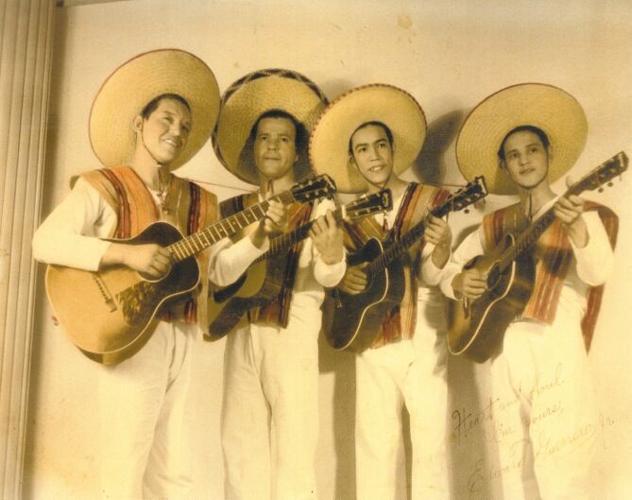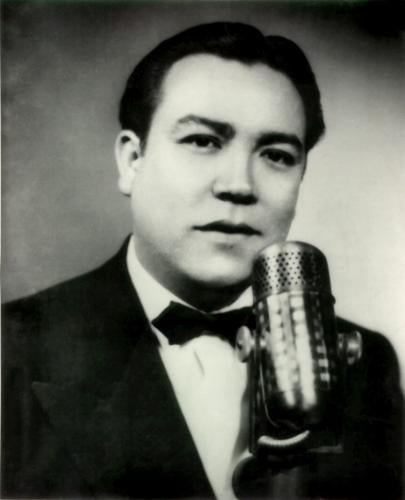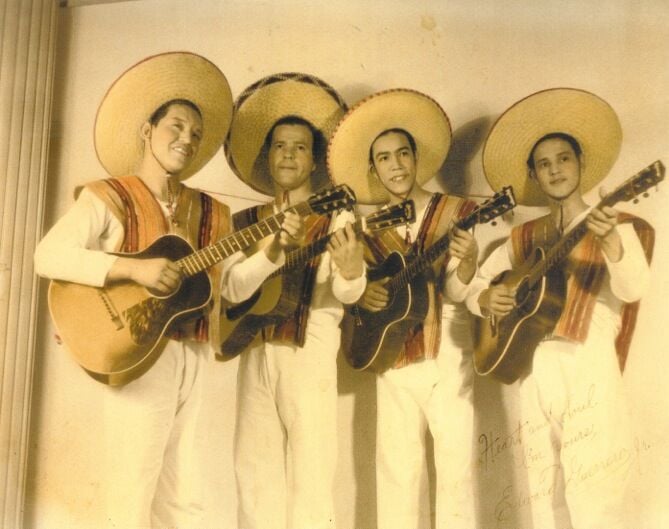Long before he came to be known as the “Father of Chicano music,” singer and songwriter Eduardo “Lalo” Guerrero was a member of a different kind of local band: the Tucson High School Class of 1935.
By then, the teenager from Barrio Viejo had already written one of his most enduring songs, and he was just a few years away from making his first big splash in a celebrated international career that would span the next seven decades.
Guerrero, who died in 2005 at the age of 88, is now being honored for his connection to the Old Pueblo’s oldest high school. The Tucson High Badger Foundation has selected him for induction into the school’s Hall of Fame, where he will join the ranks of more than 200 other prominent locals enshrined since 1982.
“I’m sure it would have meant a hell of a lot to him,” said his son, Mark, in a phone interview from Cathedral City, California, near Palm Springs. “He loved Tucson. He loved Tucson High.”
The honor comes despite the fact that Guerrero never actually graduated.
His immigrant parents moved the family back to Mexico during his senior year in the midst of the Great Depression. Though they returned to Tucson from Mexico City several months later, Guerrero did not go back to school.
The only diploma he ever received was an honorary one that the principal at Tucson High surprised him with in 1954, when he played a show at the school.
“I remember it like it was yesterday,” Guerrero wrote in his 2002 autobiography, “Lalo: My Life and Music.” “The students gave me a standing ovation, and I was so choked up that I couldn’t even say thank you.”
Lalo Guerrero was born in a house at the corner of Meyer Avenue and Simpson Street on Christmas Eve, 1916. His mother taught him to play the guitar and passed on her love of Mexican songs.
He was playing in bands and performing at parties and on local radio programs when he was still in high school.
After a run of paying gigs in Tucson, he and his band, Los Carlistas, decided to try their luck in Los Angeles, where they appeared on stage at several famous clubs and scored an uncredited part in the 1937 Gene Autry Western “Boots and Saddles.”
When the film played in Tucson, the band received top billing on the marquee.
Two years later, Los Carlistas were picked to represent Arizona at the 1939 World’s Fair in New York, where Guerrero and company appeared on the “Major Bowes Amateur Hour,” a popular talent show broadcast nationally from Radio City Music Hall.
That was an early high point in a long career that saw Guerrero earn acclaim and inspire other Hispanic musicians across generations, even while he worked long hours playing music in restaurants to support his family during lean times.
Mark Guerrero, an accomplished musician himself, said his father was a rare breed in the music world. “The thing that made him so great was he was a world-class vocalist and a world-class songwriter,” with hundreds of credits across a range of styles, including mariachi, blues, salsa and rock ’n’ roll.
He wrote and performed parodies, romantic ballads and serious political songs with equal enthusiasm.
“He was like Bob Dylan and Frank Sinatra and Elvis Presley all rolled into one,” Mark Guerrero said.
And his most famous song might just be the one he wrote when he was still enrolled at Tucson High. It’s called “Canción Mexicana,” and it’s a tribute, built on traditional melodies, to his family roots in Mexico.
Today, Mark Guerrero said, the song is “a standard that every Mexican singer and mariachi knows, and it was the first song he ever wrote when he was a teenager.”
According to Guerrero’s 2005 obituary in “Variety,” his music dominated the Latin American charts in the U.S., Mexico and South America in the 1950s and 1960s, when he had as many as three hits in the top 10 at the same time.
His popular swing songs from the late 1940s enjoyed a resurgence 30 years later, after they were featured in the 1979 Broadway play “Zoot Suit.”
Since then, Guerrero has been inducted into the Tejano Music Hall of Fame, declared a national folk treasure by the Smithsonian Institution and had a statue erected and a street named in his honor in Cathedral City, where he spent the last years of his life.
Two of his most prestigious awards came directly from U.S. presidents: George H. W. Bush presented him with the National Endowment for the Arts‘ Heritage Fellowship in 1991, and Bill and Hillary Clinton hung the National Medal of the Arts around his neck in 1997, marking the first time a Chicano had received the nation’s highest honor for artistic achievement.
Music lovers have continued to celebrate him long after his death.
In December 2016, KXCI-FM radio host Pepe Galvez and documentary filmmaker and former Tucson Citizen writer Dan Buckley organized a tribute concert at El Casino Ballroom in South Tucson on the eve of what would have been Guerrero’s 100th birthday.
They called the event “Lalopalooza.”
At the time, Buckley described Guerrero as “one of the most important singer-songwriters of the 20th century.”
Guerrero and five other outstanding Tucsonans will be inducted into the Tucson High Badger Foundation Hall of Fame during the group’s annual breakfast meeting on Oct. 19 at the Doubletree by Hilton, 445 S. Alvernon Way, across from Reid Park. Mark Guerrero said he hopes to be there along with his brother, Dan, a film and television producer whose credits include the 2006 documentary “Lalo Guerrero: The Original Chicano.”
Though he wound up living much of his life in California, Lalo Guerrero’s hometown always held a special place in his heart and in his music, his son said. His songbook includes a number of tunes about the Old Pueblo, including one rousing tribute simply titled “Tucson.”
In his final studio sessions before died, Guerrero recorded three songs for “Chavez Ravine,” a historical concept album by guitarist Ry Cooder about the destruction of a Mexican-American neighborhood in Los Angeles to make way for Dodger Stadium. One of those songs, released a few months after his death, is an emotional ballad called “Barrio Viejo.”









